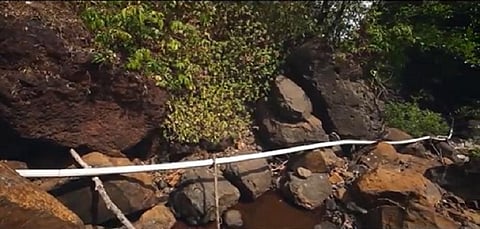

Water-starved villages across India have strived over the last two decades to build sustainable sources of drinking water. They combined traditional knowledge and modern innovation to ensure supply is seamless and the water reaching their homes is safe to drink.
The rural population also tried to make sure water released from washrooms and kitchens are reused. The local-level governance structures made the best use of central and state schemes and also consolidated community efforts to fund these projects.
Researchers from the Centre for Science and Environments (CSE), a Delhi-based non-profit, travelled to some of these villages and found stories of hope and success. In this part of the series, Shivangi Agarwal captures how the residents of Ramanwadi village in Maharashtra’s Kohlapur district turned their situation around after struggling with an acute water crisis for years.
For generations, water shortage has been behind Ramanwadi's socio-economic problems, said Yuvraj, a local resident. Women had to trek to the nearest waterfall to fetch water; farm activities were affected leading to low production; the men had to migrate to cities to earn a living, he said.
The village on the Western Ghats is cut off by forests and has a population of 350-400 households. It receives an annual rainfall of 500-600 millimetres.
The water crisis turned acute from the late 1990s. “Around 2004, only 2.5 acre land was under perennial irrigation and crop production was very low,” said Aruna Patil, the village sarpanch.
The Gram Panchayat formed a committee in 2008 to tackle this persisting problem. “An ingenious structure was formed to source water from the nearest natural spring using pipes,” she said. Several community meetings were held to understand the requirements of the structure.
It was difficult to convince the households at first but with help of Maharashtra based non-profit Venu Madhuri, families were educated on the importance of having access to safe water and sanitation, said Rahul Deshpande, Venu Madhuri trust, Maharashtra. “Eventually more and more villagers, along with the panchayat committee, voluntarily contributed in terms of both labour and finances.”
The pipes were installed at a height to ensure gravitational flow of water from springs directly to households and farmers, said Yuvraj. “We get 24-hour water supply at our homes and we are charged Rs 200 annually for it,” Patil shared.
Increase in crop production after piped water-supply project
Source: Venu Madhuri Trust
The Panchayat operates and maintains the water supply network, said Deshpande.
Any grievance or complaint is also resolved by the panchayat, according to Yuvraj. “Water testing is done every two months to ensure safe drinking water.”
The cultivable land with perennial irrigation increased from 2.5 acres to 50 acres in the last ten years. Availability of water has made it possible to grow wheat, groundnut, moong and various other crops, said Rajesh, a local farmer. “The production has increased and farmers are now able to sell their produce at mandis.
The model of Ramanwadi Gram Panchayat is an economically viable and sustainable initiative.
Read more: